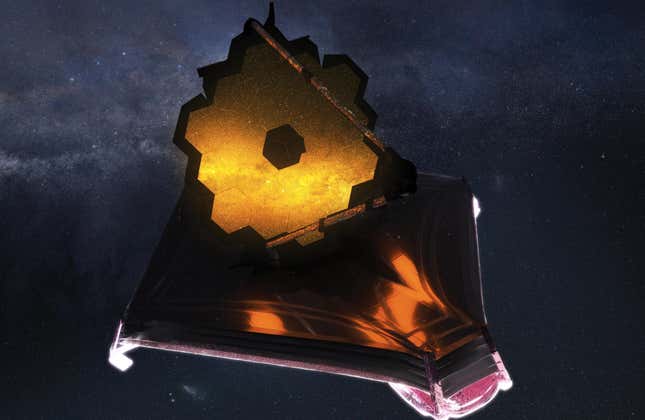
NASA says the Webb Space Telescope’s Near Infrared Imager and Slitless Spectrograph is currently unavailable for science operations following a software glitch earlier this month.
In a release published yesterday, the agency stated that the issue started on January 15, when a communications delay within the instrument caused its flight software to time out. Flight software is a crucial aspect of any instrument operating in space, as it manages a whole suite of operations on a given spacecraft, including its orientation, communications, data collection, and thermal control.
NIRISS’ flight software timing out doesn’t mean that Webb is about to spin out of position or anything else disastrous. In fact, the NASA release stated “there is no indication of any danger to the hardware, and the observatory and other instruments are all in good health.” Affected scientific observations would be rescheduled, NASA said.
Webb completed its million-mile journey to L2, the area of space from which the observatory images the cosmos, a year ago this week. It’s imaged some remarkably sharp and informative views of the universe in its six months of scientific operations so far.
But it hasn’t been completely smooth sailing for the $10 billion space observatory. While its scientific instruments were commissioned without issue, in May one of Webb’s mirrors was struck by a micrometeoroid—a very small rock sailing through space—causing damage, though the team said the telescope’s optical performance was still twice as good as required.
There have also been some software hiccups. In August, the telescope’s Mid-Infrared Instrument (or MIRI) had a software glitch that paused its operations through November. And in December, there was an issue with the telescope’s attitude control, which manages where the telescope is pointing. The glitch put the telescope into safe mode multiple times last month.
None of these issues amount to disaster. Keep in mind that the Hubble Space Telescope (Webb’s predecessor) continues to operate after more than 30 years in space and has gotten multiple software updates and repairs, including by human hands. Humans will not be traveling a million miles through space to address Webb’s issues, so NASA must deal with the software issues from the ground.
Space agencies may design future space observatories to be upgraded with robotic servicing, but for now, Webb’s maintenance will have to be done remotely.
Webb has done some tremendous work so far and will continue to illuminate the most ancient and murky regions of the cosmos. You can check out some of what’s on the docket, along with other astronomy plans for the year, here.